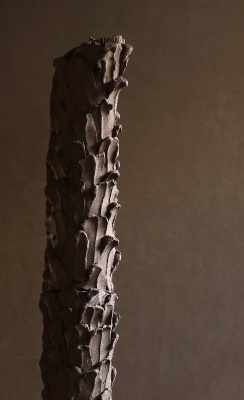Descripción de la Exposición The determining factor of JPG's practice is the exploration of photography as a technical resource and a language unto itself. From this central idea springs his interest in revision and the dialogue between the photographic image and other mediums of representation; together with an investigation of the possible transformation of the quotidian spaces into expressive matter. He conceives the creative process as an instrument of research and knowledge, where intuitive intelligence and the intellectual exercise of constant questioning, induces the formulation of doubts, vital to the beginnings of new possibilities and directions. By taking the image as a container of ideas and a vehicle of information (not as a mere fact anchored in formal precepts), he is able to manipulate the scenes as well as to complete construction of images, all of which results in the exploration of other mediums, questioning the limits of each and every one of them. 'My images represent objects, but these objects have been modified both formally and conceptually, giving them the possibility to project themselves beyond their functionality and structure. In this realm of ideas, one intuits a certain poetic character, which is more attributable to the object, itself; or because of its being selected, than to the photograph. However, and in spite of the fact that I want the photograph to act only as a register and container of the idea (image-idea), I cannot but help to think of photography's capacity to transform: in this flattening out of information, or that photography makes an indissoluble unit of all of the elements.' As part of an expanding investigative process, and in his first individual exhibition at Alejandra von Hartz Gallery, JPG will present a project in which he continues to explore photography through photography, itself. This is accomplished through constructed images that exist as independent entities expressing an idea; not the mere registers or memories of a 'reality'. The reality is the photograph, itself. Light, as a vehicle of ideas, as information, as a catalyst, as a subject, will be the object of study and reflection, thereby becoming the essential element that ties photography with the material. The exhibition refers back to the basics of photography, exploring the idea of reproduction, the tools that create the possibility of registration, photo sensible materials, the picturesque representation of light, amongst others. Juan Pablo Garza was born in Maracaibo, Estado Zulia, Venezuela, 1980. Studied photography in the Escuela Julio Vengoechea, 1998, Venezuela, Maracaibo; and in Miami Dade College together with the artist Teresa Dihel, 2002, USA Has participated in various workshops, amongst others: Taller de Aproximación a la Fotografía Contemporánea given by Nelson Garrido, 2005, Maracaibo, Venezuela. Has enjoyed numerous individual shows in Venezuela and in collectives in countries such as Venezuela, Colombia, Holland, Canada, Spain and the United States. Amongst prizes and distinctions received, one must note: Scholarship by Fundación Cisneros / Colección Patricia Phelps de Cisneros to participate in the residential program of the Skowhegan School of Painting and Sculpture, 2012; First prize, XII Salón SuperCable Jóvenes con FIA, Centro Cultural Corp Banca, 2010, Caracas, Venezuela; and First Prize 6th Salón Regional de Jóvenes Artistas, Museo de Arte Contemporáneo del Zulia, 2010, Maracaibo, Venezuela. Currently Juan Pablo Garza continues with his personal development as an artist, teaches, is the editor of Photography for the magazine, Gopher Illustrated, and co-directs AL BORDE, a space for contemporary art, which has received a grant from the Fundación Cisneros/Colección Patricia Phelps de Cisneros within its program to support cultural organizations.

Exposición. 17 abr de 2025 - 03 sep de 2025 / Centro Cultural Andratx (CCA) / Andratx, Baleares, España

Formación. 08 may de 2025 - 17 may de 2025 / Museo Nacional Centro de Arte Reina Sofía (MNCARS) / Madrid, España